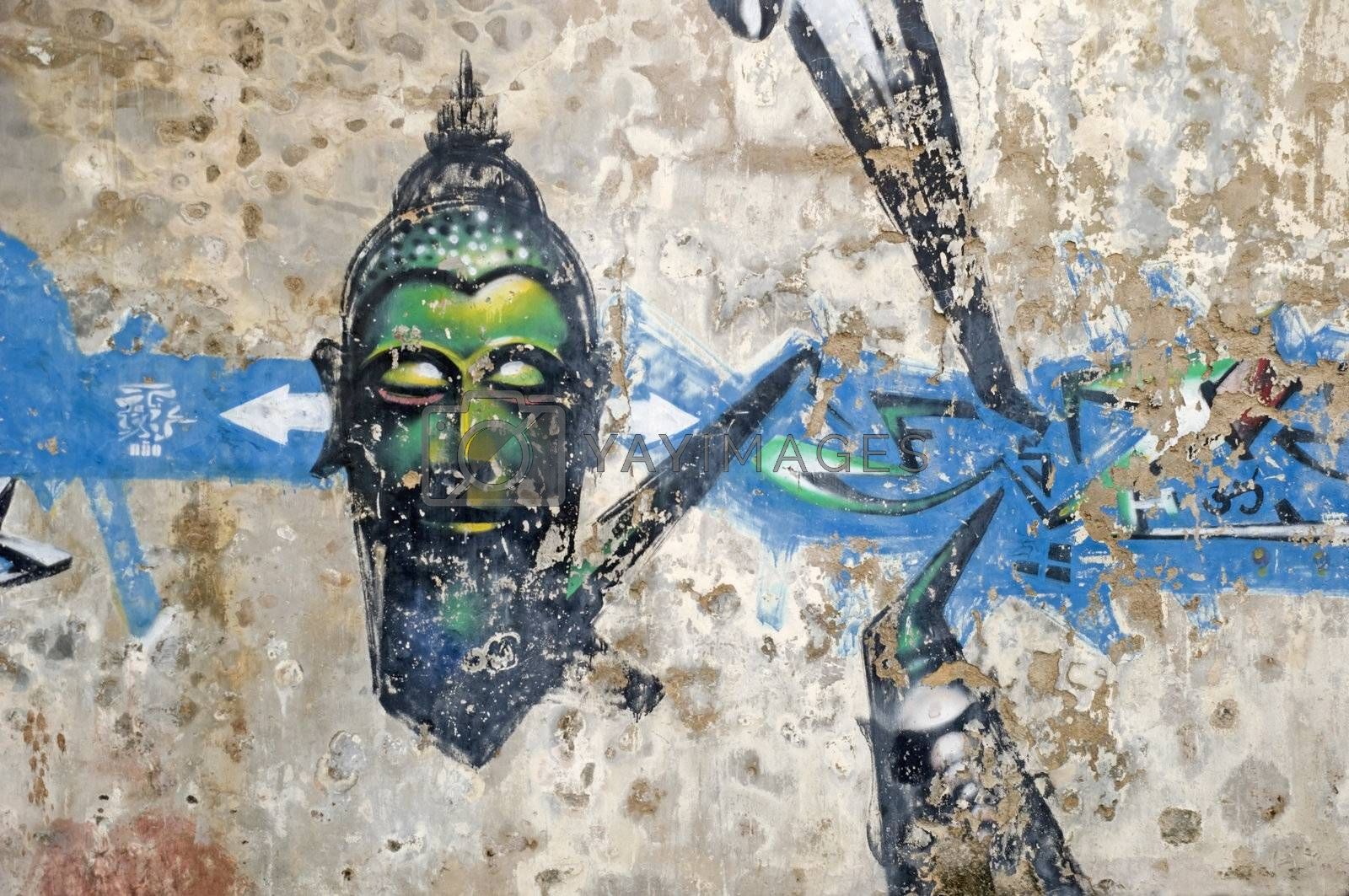The thinking mind is no good for dealing with emotional pain. For the thinking mind everything is about ACTION – either this has to be done, or that has to be done; either such-and-such a step has to be taken, or some other sort of a step has to be taken. Either I have to push something away or I have to grab tightly hold of it and secure it. Either I have to say YES to it or I have to say NO – there is no middle ground, there is no alternative other than ‘control’, which is what this black-and-white business of ‘YES versus NO’ (or RIGHT versus WRONG’) comes down to…
We could also say therefore that the thinking mind is all about EVALUATION – either something is acceptable or it is unacceptable, either something is good or it is bad, either it is useful or not useful, either it is right or it is wrong. Once an evaluation has been made then straightaway the next thing is that the mind tries for all it is worth to control the situation in accordance with what it has just decided. It rushes full-steam ahead and tries its hardest to regulate or manage what is going on in terms of its preferences, in terms of its likes and dislikes, in terms of its agenda, in terms of its unexamined evaluative criteria.
This type of mechanical approach is no good at all for dealing with pain! What happens when the thinking (or rational) mind tries to deal with emotional pain is that the pain just keeps getting referred from one place to another; it gets bounced from one hard, unyielding surface to another. We just keep saying NO to it. The pain gets sent away, it gets ‘referred elsewhere’, but it has nowhere else to go! The rational mind itself is a hard, unyielding surface – it is totally rigid, it has no give or leeway in it at all. It is ‘my way or the high-way’. It’s the controlling mind’s way or no way. It either happens the way my mind wants it to or I freak out!
All the thinking mind can do is react automatically, all it can do is automatically grasp at stuff or push stuff away, and both of these options – have we have said – come down to controlling, regulating, managing.
This isn’t the rational mind’s fault – that’s just the way it’s built. It has no other options, it can only ever affirm or deny, accept or reject, say YES to what it likes or No to what it doesn’t like. It can only ever push or pull, agree or disagree, cajole or threaten, entice or scare, bribe or bully.
The point is that the rational mind just isn’t suited to dealing with emotional pain. This isn’t its job – the rational mind is a specialized tool whose function is analyze and control, to problem solve and then fix. But emotional pain isn’t a problem to be fixed – if we do treat it as a problem to be fixed then as we have said the pain just ends up being treated as a tennis ball, being continuously batted from one place to another, over and over again, with absolutely no useful end being served. The harder I hit the ball the harder it will come back to me, and so what exactly am I doing? It’s my pain after all, so how can I disown it? What is the point in playing tennis with it, batting it from one side of the court to the other? I could carry on doing this forever, but that isn’t going to make me feel any better. Far from making me feel better, doing this adds a new dimension of pain to my situation – the pain of pointless repetition, the pain of unending futility.
Pain isn’t an intellectual puzzle to be solved but an emotion to be felt. The helpful way to deal with it is to gently allow it to be there, like you would allow a crying child to be there, instead of trying to ‘intellectually manage’ the situation (i.e. by trying to get the poor child to stop crying by using threats or bribes, by instigating various kinds of stone-cold rational procedures). If this rational approach worked there would be no need for parenting at all and we could happily farm out the whole ‘problem’ to robot child minders. It doesn’t work however and rationality is no sort of an answer to any sort of pain – if the truth be known, rationality is the denial of pain, the refusal of pain. What is needed is to be present with the pain, to be present with the emotion.
Iris Murdoch talks in one of her novels about gently allowing the pain to come to rest in us, allowing it to have a home in us rather than sending it off somewhere else the moment we feel it, rather than straightaway evicting it, giving it its marching orders, throwing it out unceremoniously onto the street. This is how we deal with pain, by learning to let it be rather than intellectually processing it.
This process of ‘allowing the pain’ happens naturally (or ‘spontaneously’) once we come out of our thinking mind. Coming out of our thinking mind is the key and we come out of our thinking mind just as soon as we realize that pain isn’t a problem to be solved. We let go of the thinking process just as soon as we realize clearly that the painful situation we are becoming aware of isn’t something that we need to do anything about. As soon as we realize that doing is not the answer then it is as if we ‘soften’ in ourselves, we stop being hard and rigid and unyielding. We ease up, we melt, we stop tensing up. Tensing up is only good if you have to do something – if there is no need for doing then there is no need to tense up.
It is important to realize that the spontaneous process of ‘softening’ or ‘dissolving resistance’ doesn’t happen because we want it to, because we tell ourselves to ‘stop tensing up’. The process of dissolving resistance occurs perfectly naturally as a result of gently noticing the resistance, and giving it the space to be there, because it is there. We see that the tension (which manifests as pain or discomfort) is there, we see that it is a reality.
A good way to get familiar with this spontaneous process of dissolving tension or resistance by noticing it is to practice with physical tension. When I am tense and controlling (i.e. when I am stuck in my thinking mind) then this rigid, unyielding and unforgiving mental attitude tends to translate into physical tension, physical rigidity. Mental rigidity and physical rigidity are the same thing, they come from the same root. Body and mind tense up in sympathy with each other.
As soon as I pay gentle attention to the fact that I am tense in my body then the tension naturally eases up slightly, simply by virtue of the fact that I am bringing my consciousness to it in a non-judgmental and non-controlling way. This is all that’s needed. Bringing my awareness to the physical tension introduces an element of freedom into the situation – where the awareness is there is no forcing, no trying, no straining, no desperate attempt at controlling. Awareness is the very antithesis of forcing and trying and controlling and so there is no way that bringing my awareness to the tension will not ease or melt that tension, given time. If it is ‘unconsciousness’ (i.e. automatic forcing) that causes the pain and distress in the first place, then consciousness (i.e. the quality of being mindful) is bound to undo ease this pain and distress! How can it do otherwise?
Mindfulness always melts the unconscious (or ‘habitual’) knots of tension just as the sun when it shines will always allow seedlings to grow and flower-buds to flower – that’s just the way it works. The key point to understand here however being that gentle mindfulness doesn’t demand change any more than the sun demands growth from the seedlings it shines on. Mindfulness means ‘paying gentle attention to what’s going on with no agenda’, just as the sun shines with no agenda. As Thich Nhat Hanh says –
Mindfulness acts just like the rays of the sun. Without any effort, the sun shines on everything and everything changes because of it.
I am not applying my problem-solving mind to the physical tension (which would only add yet another level of tension into the equation), but rather I am allowing my attention to ‘touch’ it very gently, very patiently, very un-demandingly, so as to acknowledge that it is there. This act of gentle, undemanding acknowledgement starts straightaway to melt the tension, to dissolve the tension. If the tension has been there in the body a long time then it won’t dissolve immediately, but the process has started and if I keep on practicing mindfully in this way then over time the tension will very gradually give way. It is only really the physical equivalent of a ‘bad habit’ after all and if a habit can be learned then it can also be unlearned.
Once I learn to bring gentle awareness to physical tension then it is relatively easy to bring my awareness to mental tension in exactly the same way, allowing this mental tension to gradually melt or dissolve. Just as physical tension can melt, so can mental tension – it is all just a matter of gently acknowledging that it is there. All knots of mental tension (all rigid patterns of thought, all ‘non-allowing’ or judgmental attitudes) can in time be dissolved with awareness.
What is happening in this ‘acknowledging’ is that I am no longer tensing up against my own inner pain. I am no longer fighting it. I am no longer resisting it or resenting it. I am no longer judging it and reacting automatically against it. I am no longer batting it from one place to another, as if I am in some kind of a tennis match. I am no longer refusing to give the pain a home.
Because I am acknowledging that the pain is there, I am no longer playing futile games with it. I am no longer pretending to myself that the pain does not belong to me, or that I do not have to feel it, and because I am no longer playing games with my pain in this way (i.e. trying to intellectually do stuff with it in accordance with the agenda of my rational mind) the spontaneous process of healing can at last begin.







Bernadette Finn
Happy to receive any updates or newsfeed